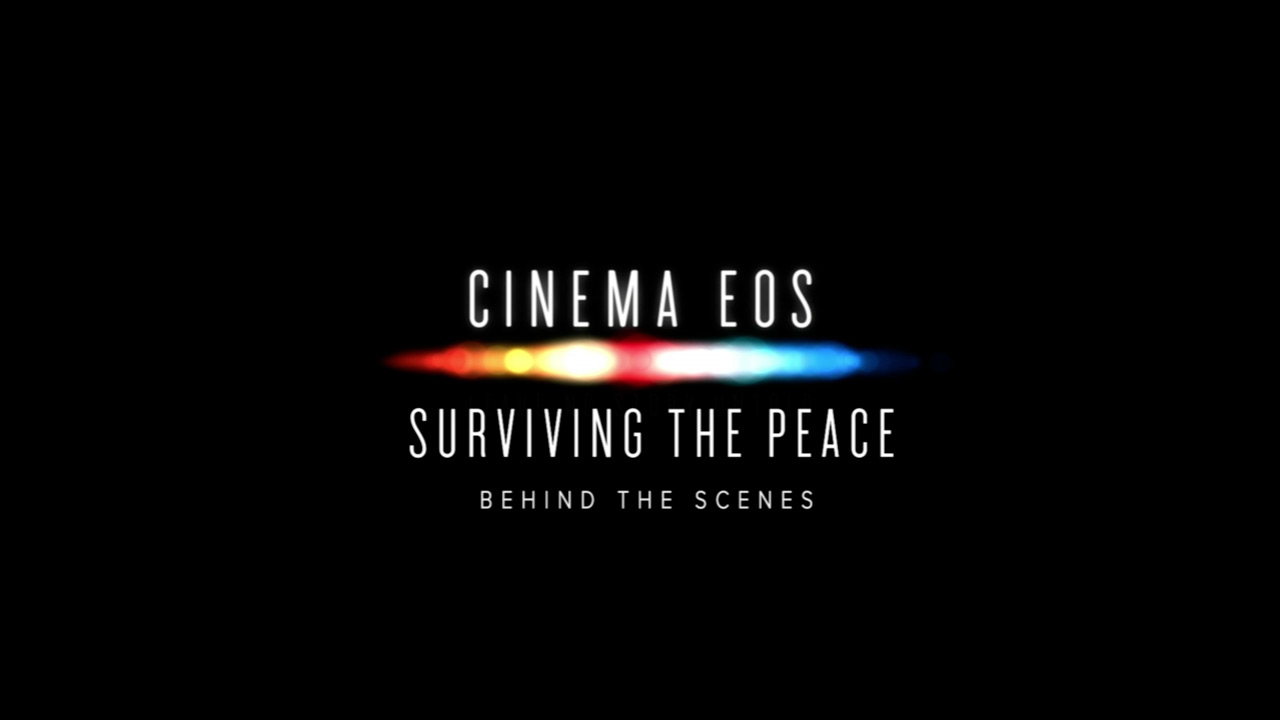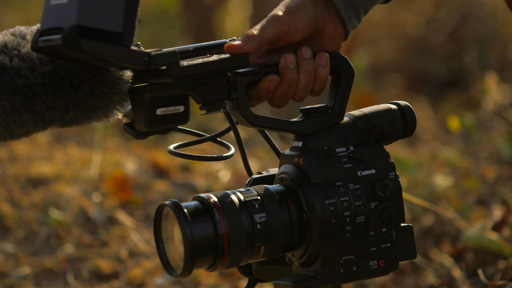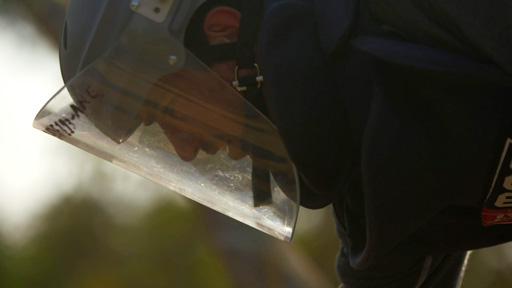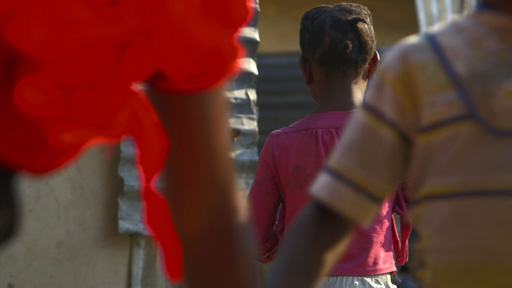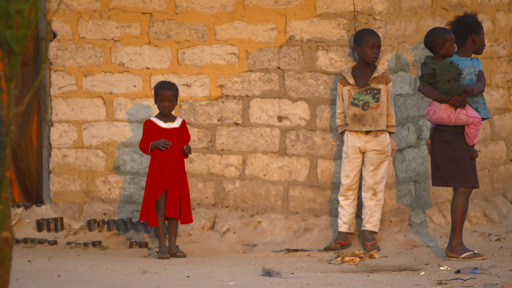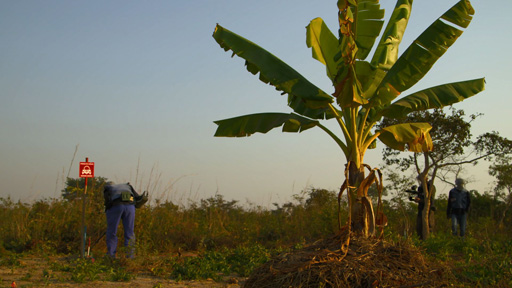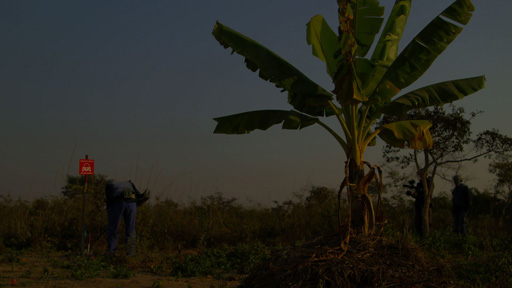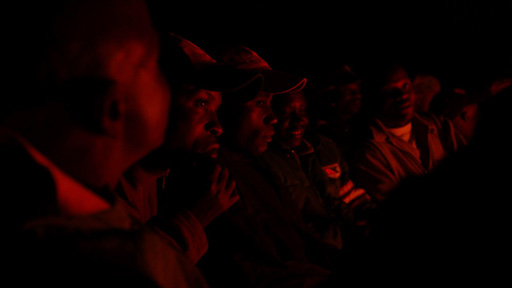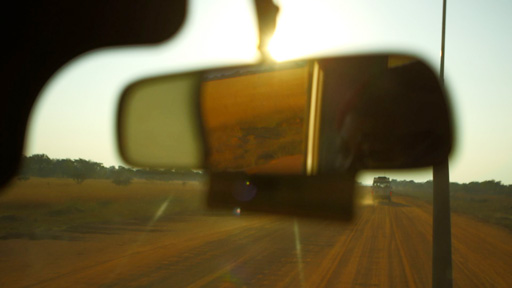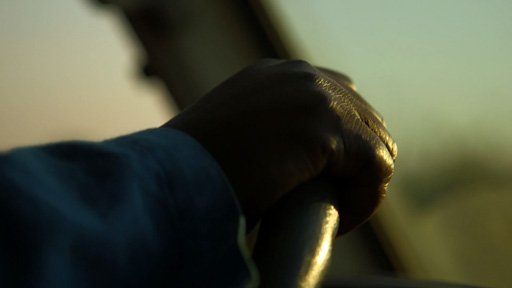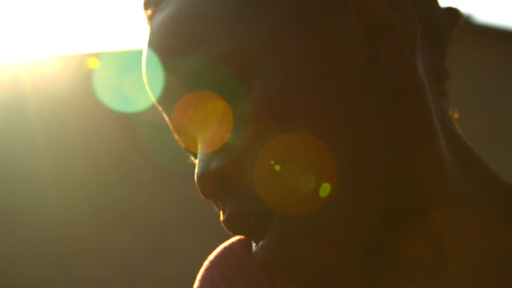MediaStorm’s Director of Photography, Rick Gershon, brought the C300 to Angola to shoot their documentary “Surviving the Peace,” which follows the progress of the Mines Advisory Group as they clear unexploded ordnance. Watch as he shares his thoughts on how the C300 helped realize their vision for the production in this interview with Gershon, featuring footage from the documentary.
Introduction
This is a practical review taken from my experience using the Canon C300 in the field on an actual project. This is not a technical review. I will not be discussing the in-depth minutia of the technical aspects of this camera. Rather I will be giving real world examples of both the positive and negative aspects of the camera that I experienced while using it in a documentary setting, in very difficult conditions on a very important film.
In my opinion, it takes a very special kind of camera to work well in a documentary setting. In the kind of documentary style that we work in everything starts and stops with the photographer. There is no assistant to pull focus, no sound guy, no director or producer. You don’t have four bodies that you can rig up to various degrees and swap out when needed. It is only you and your camera. The need to play all of these roles, all while telling a story, creates a very special type of demand for a camera. On a base level the camera needs to be fast and easy to work with, it needs to feel comfortable and be subtle enough to be forgotten. In the end the camera needs to be able to get out of the way and let you do your thing.
It was my aim to put the Canon C300 to the test in the most demanding of environments to see just how it stacked up in a documentary setting. The following are my thoughts and opinions from my experience using the C300 on the film Surviving the Peace: Angola.
Background
I’ve been working as the director of photography at MediaStorm for more than two years now. Before that I spent three years at Getty Images as a multimedia photojournalist and before that I was with the Dallas Morning News as a staff photographer. I am a still photographer at heart and in addition to my still photography work I have spent the last six years learning the art of video storytelling.
Like many photographers that make the move to video, the release of the 5D Mark II was revolutionary for me. This was the first time that I found a video tool that could give me the same artistry and point of view that my still camera allowed. But, as many know, HDSLR’s are actually pretty difficult to work well with. They are simply not built to do professional video coverage.
Things like XLR ports, ND filters and a monitor that you can actually focus on, must all be added as accessories. It seemed like the better I got at working with this camera the more gear I added to my kit to make this camera perform as a true video/film camera would. My kit began to double and triple in size to the point it was almost laughable. What happened to the days of throwing two bodies and some lenses in a bag and hitting the road?
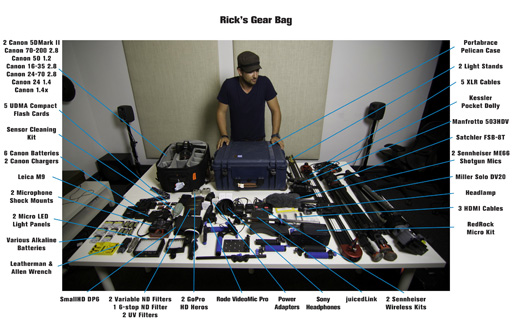
Like many, I had really high hopes that the Canon 5D Mark III would solve all of my woes and be the perfect camera for me. That was not the case to say the least. There was not one thing about the 5D Mark III that would change my kit. I still needed an XLR adapter or an external audio recorder. I still needed my redrock rig and my monitor as well as ND filters and basically all of the add-ons I had amassed to make my Mark II what I needed it to be.
On top of that I had to pay $1,000 more for the 5D Mark III, which in my opinion is basically the camera that the Mark II should have been in the first place. Being able to monitor your audio with headphones and adjustable levels while recording should not be a luxury.
Then came the announcement of the Canon C300. It certainly had all of the features that a professional video camera should have and clearly solved many of my problems, but it had a list price of almost $20,000 (street price ended up being $16,000). Unbelievable. How was a guy in the HDSLR price range going to be able to afford something like this? Let alone two bodies for interviews and one as a backup. I was disappointed to say the least. And for this price I expected more features, like 4K resolution and a RAW file format.
So like many others I quickly dismissed this camera as a real solution and went back to the drawing board. But as the camera came out and made its way into the hands of photographers and DPs I started hearing really positive things. I started hearing just how great the ergonomics of the camera are and how beautiful the files it produced were. How it was great in low light and resolved issues like moire and motion jitter. So with a week to go before a film shoot in Angola I decided to give it a chance.
The Project
The box from Canon arrived the very morning I was to fly to Angola to shoot the second installment of a series called Surviving the Peace that we were producing for MAG America on the impact of landmines and unexploded ordnance in conflict and post-conflict countries. You can see the first film we did for them in Laos, which was shot completely on the 5D Mark II.
On the second installment, just as the first, I would be teaming up with Nathan Golon, an excellent cinematographer based in Washington, D.C. and a recent C300 convert. We would work as a two-person team, sometimes shooting side by side to give a scene two camera coverage and sometimes we would split duties to cover more ground. But all the while shooting, story producing and gathering sound on our own. We were truly a bare-bones crew.
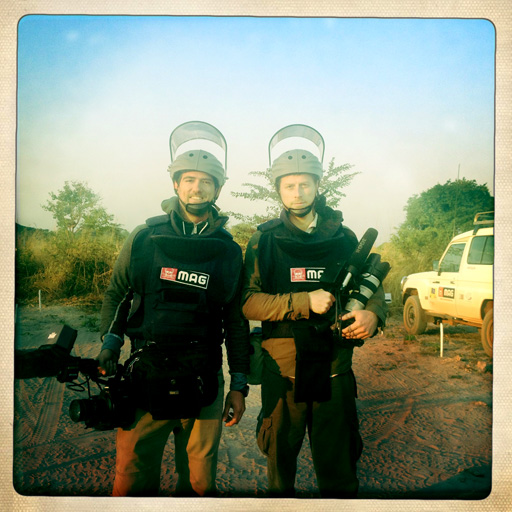
With no time to even assemble the camera before my flight, I knew this would be a serious test of how easy it would be to figure out and work with.
I brought the manual on the plane, but, honestly, I am not a manual guy and didn’t open it once. I was, however, lucky that Nathan had picked up his C300 about a month before and had some experience working with it and getting it set up to shoot with.
I knew Angola would be a great testing ground for the C300 because of the conditions we would be working in. There would literally be no infrastructure where our story would take place: No electricity and no running water. The climate is very demanding, with large swings from freezing cold at night and in the morning to extreme heat in the afternoons. It was also the dry season so I knew it would be extremely dusty in the desert-like terrain. Not to mention we would be tromping through mine fields all day: A scenario in which you do not want to be distracted by a new camera.
Also, this is a situation where the HDSLRs really struggle, especially with the dust. The C300 promised to be intuitive and comfortable and have a robust build made to handle tough conditions, so I was ready to put it to the test.
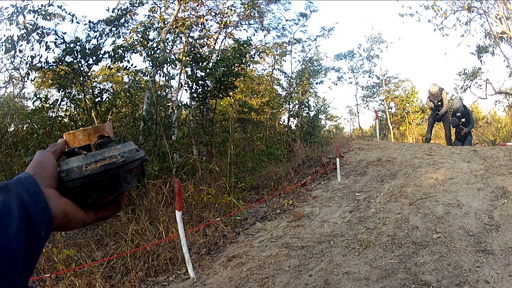
The Camera Setup
So the first night in our hotel, jet lagged and cranky, we assembled our C300s and began to mirror our settings so our footage would match.
I was immediately impressed by the build of the camera and the ease and speed in which I was able to put it together. Due to the modular design of the C300 it is extremely fast to put together and breaks down to just three pieces without the lens and mic. This was huge for me because it takes me about 15 minutes or so to assemble my HDSLR rig from scratch and it took me less than a minute to assemble the C300. Setting up and breaking down my HDSLR rig is one of my least favorite aspects of shooting with those cameras. Documentary shooters need a camera that can be set up and rolling in minutes. I’ve missed really important storytelling moments because I was too busy setting up my camera rig.
The connections between the three pieces (the body, handle and monitor/XLRs) are really solid and the cables are robust. My only complaint here is that—because the monitor and XLR ports come on the same attachment and the camera has no internal sound—there is no way to get audio to the camera without using the attachment. So if you want to go super low profile and only use the camera body with a lens and no handle or monitor attachment you have no option for sound. Now, built-in sound on any camera is usually very low quality and I would never recommend using it in your edit, but it is really nice to have if you want to sync with an external audio recorder or your second camera in post.
Luckily the camera has several timecode options so you can go that route. But for guys like me who really need to fly under the radar and like the size of the camera without the attachments we have no option for sound but an external recorder. Or if you want to use an external monitor and still use the XLRs you must also have the monitor mounted to the camera because it is on the same attachment. It would have been much better to build the XLRs into the camera body itself and I do wish they would have built some form of internal mic into the camera.
After just a few minutes of scrolling through the menus I felt I had a pretty good grasp of where the major features were located and how to access them. One feature of the camera I really like is the programmable buttons. Most mid-range cameras and up have these and I loved using them on my Sony EX3. They allow you to program the features you use most often to buttons on the outside of the camera for quick access so you don’t have to scroll through the menu while you should be shooting.
For instance, the function button, which is used to toggle through the aperture, white balance and shutter speed is in a really awkward position on the back of the camera. If you use the top handle like I do, then it is really hard to reach during a shoot without moving the camera. I reprogrammed this function to the number nine button on the monitor panel just above the record button. This allowed me to use the function button and toggle through the options with just one hand and leave my other hand on the lens focusing. I found this to be super helpful.
There are basically two ways to hold the camera given that you aren’t adding any support rails or third-party attachments. One is with the top handle, which I like the most because it feels a lot like my HDSLR rig. I found that I am more steady and have more range to move the camera when holding it this way. It’s like lifting weights, you can suspend more weight than you can hold up and for longer. The second is with the hand grip on the side, which I found surprisingly comfortable to use. Instead of your hand fitting in the strap vertically and perpendicular to the camera like most smaller video cameras, your hand fits horizontally and parallel to the camera. It feels much like a medium format still camera with a hand grip, which of course, coming from a still photography background, I love.
This allowed me to sort of cradle the camera and I found if I pressed the eyepiece to my chin while looking into the monitor it created another point of contact, making the camera super steady. Having this option is really nice, because, when only using the top handle, the result is that most of your footage is shot at waist level and starts to all look the same. With the C300 you have two super solid ways to grip the camera without adding any handles or rails to the camera. This adds to the low profile ergonomics of the camera and keeps it from being clunky to work with.
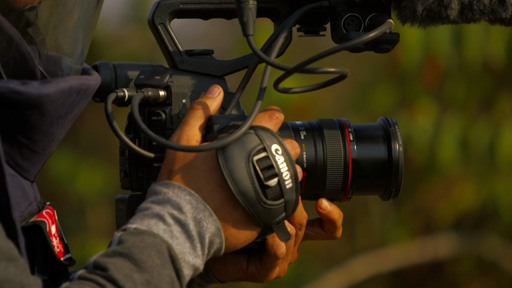
With my HDSLR rig there are cables and wires running everywhere. Just to get my hand to the focus ring I have to weave it through the mic and monitor cables because they connect on the left of the camera right where my arm needs to go. The open connections on my HDSLR also caused the cables to break easily at the connection point and left the ports wide open for dust and moisture.
Not the case with the C300. The connection for the cables is on the right side and they have extremely robust metal connectors or are covered with a rubber cover. So you have plenty of room to operate the camera and access all the functions on the left side of the camera. (Note: Be careful with the rubber covers, especially the ones that cover the XLR ports. They can be removed altogether but I didn’t know that. If you leave them dangling while shooting they can knock the camera if you move too much and will create unwanted noise.)
The Monitor
I have a real love-hate relationship with the monitor. On the one hand it is really nice to have a built-in monitor that is as bright and sharp as this one. You can also turn it in just about any direction and it has a mirror button to flip the image when you turn the monitor in different positions. But I had really gotten used to my SmallHD DP6 mostly for the size. Despite the smaller size, the monitor on the C300 is really nice, but takes some getting used to.
The first thing to know is that the monitor settings out of the box are zeroed out, making the image extremely flat and hard to focus with. It’s important to go into the menu and adjust the contrast and brightness before going out to shoot. I like to up the contrast quite a bit and the brightness just a small amount as I find it easier to focus and the image on the monitor somewhat represents what I want the footage to look like after it’s been color graded.
One really great feature about the C300’s monitor is that it has color peaking with fully adjustable intensity. What color peaking does is light up everything in focus with a certain color, in this case red, yellow, blue or white. This is super helpful especially in documentary where you are focusing constantly and on a small monitor like this it can be really hard to see critical focus. It was especially important on this shoot because I had to wear a face mask while in the mine field and it was really difficult to focus through.
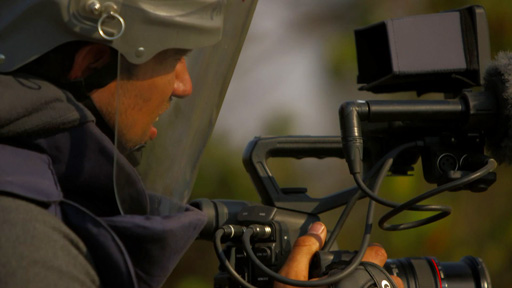
Now it is really important to set the color peaking properly and understand how it works. My initial thought was to crank it all the way up thinking that I will never miss focus. This is not the case and I learned it the hard way. From my understanding, the peaking lights up any detail in the image that appears in focus. But if you have the contrast cranked up on the monitor the wide shots appear to have more contrast or be more in focus than they actually are. And because most of the image is covered in red (or whatever color you choose) critical focus is really impossible to see. This will cause a lot of your wide shots to be just a bit out of focus, noticeable enough not to be able to use the shot.

My recommendation is to back off the intensity of the color peaking to around four or five. Then on wide shots use the magnification feature to zoom in and check focus. One of the great things about magnification on the C300 is that you can use it WHILE you are recording! This was one of the most frustrating aspects about my HDSLR: no magnification while recording. The C300 doesn’t zoom in as much as the HDSLRs, but to be able to do it while recording wins out in my book.
You can also turn the peaking on and off via a button on the outside of the camera. So learn where it is and if it is getting in the way in certain scenarios just turn it off.
The C300 also has a built-in EVF, but I personally rarely use the EVF, if at all. For those who like to shoot with an EVF it’s nice to have that feature. Unfortunately if you want to shoot with the EVF and use the XLRs you have to keep the monitor mounted to the camera, which is a big pain.
Color Profile
Another important thing to set up and decide on before you shoot is the color profile you will want to use. This is another great professional feature of this camera. You have multiple options when it comes to your picture profile settings. You can set and store lots of different settings and can even store them on an SD card and load them into another camera. This is great if you are on a multiple camera shoot or if you rent the camera and want to save your settings for the next time you shoot with it.
The color profile that has become very appealing to a lot of DPs is the C-LOG color profile. This is basically a super flat image that retains the maximum amount of dynamic range possible for the intention of color grading in post. This is a great profile and absolutely the way to go if you have the time and the budget to do some serious color grading in post, because it requires a lot of it. Also, if you really liked the look of your HDSLR images you can choose the EOS Std setting, which mimics the look and feel of the HDSLR footage. But I don’t recommend this as it really kills the detail in both the shadows and the highlights.
For this shoot I knew I would not have much time in post for serious color grading and I wanted to set my color profile to get as close to the final product as possible without completely crushing my range of exposure so I would have some latitude in post. Many third parties have come out with their own color profiles that match the look of other popular cameras. We went with a color profile from AbelCine that mimicked the Varicam look. For the most part I got really good results from their color profile called JR45VIDE except for when it came to the reds. I’m not sure if it’s the color profile or if the camera as a whole just doesn’t handle red very well, but as you can see from the frame grabs below the camera did not handle them well.
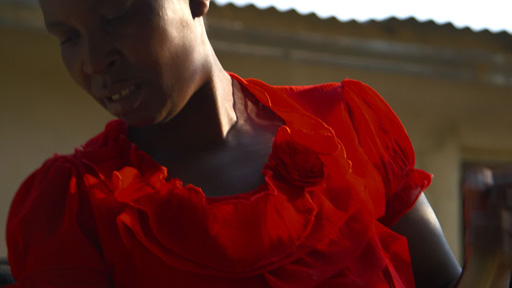
The Shoot
Now that my C300 was set up and ready to go, I was anxious for the first day of shooting. For me, as with most photographers, it takes a bit to get really comfortable with a camera and to learn how to make it do what I want. This would literally be my first day to hit the record button on this camera so to say I was nervous would be an understatement. On top of that we were dealing with a very emotional story that we were both feeling the weight and responsibility of telling well. In fact, the first day of shooting ended up producing the most emotional, and in my opinion, most important scene of the entire film.
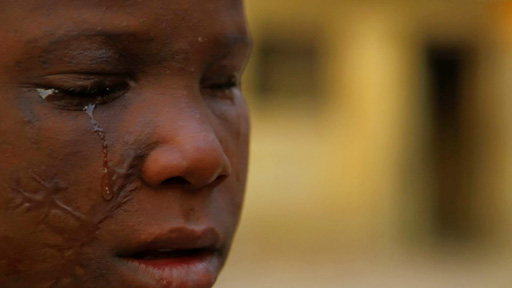
When working in documentary, especially with a very small crew or in a one-man-band situation, it’s extremely important to have a camera that gets out of your way and lets you do your thing. When the action is breaking in front of you or when you get access to a powerful, emotional scene, the last thing you need to be doing is fiddling with your camera or adjusting one of your attachments. You need to be quiet and discreet and you need to blend into the background and be forgotten. This was how I worked as a still photographer and this is how I want to work in video. Having a compact, ergonomic camera that was built to be a video camera is really important. Everything needs to be a fingertip away and it needs to be intuitively placed. But at the same time you want a camera that has weight and is steady.
Shooting with the C300 in Angola.
Shooting with the C300 in Angola.
The thing I noticed most on my first day of shooting was just how comfortable the C300 is. The top handle and hand grip gave great options for holding the camera. The camera has just enough weight to feel solid in my hands, yet is light enough to shoot with comfortably all day. My only complaint is that with a larger shotgun mic attached and the monitor in use the camera can get a little front heavy and can look a bit intimidating.
ND Filters
One thing about this camera that I feel doesn’t get enough press is the built-in ND filters. There are three of them at two stops each for a total of six stops. This is huge for guys like me that are used to having to buy very expensive screw on variable ND filters or use a big bulky matte box with slide-in filters. Having the built-in ND filters saves me both in money and in the size of my kit. It’s also one less thing to have to add to the camera, allowing for a faster setup time.
This was especially helpful for me on this shoot as we shot quite a bit in broad daylight and we wanted the film to be shot wide open for the most part. Due to its close proximity to the equator, light in Angola can be especially beautiful early and late, but really harsh and direct for most of the rest of the day. For me, using ND filters is crucial and having them built-in at my fingertips is huge. I will say that I wish there was one more ND filter as six stops just isn’t enough to shoot wide open in the middle of the day, especially given that the lowest possible ISO is 320 on the C300. So I ended up still having to use a screw-on ND filter to achieve the look I wanted in broad daylight, which was really disappointing.
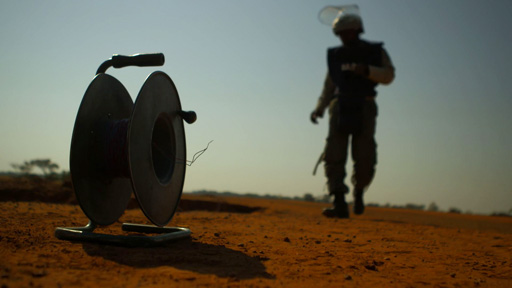
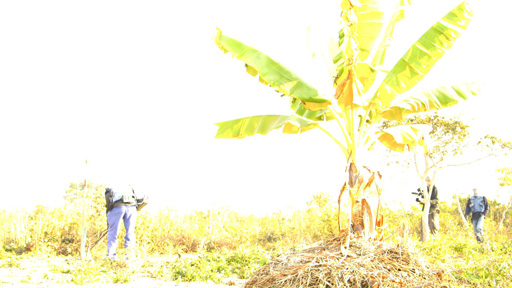
First ND filter
Second ND filter
Third ND filer
Native ISO
One thing I found interesting about this camera that is directly related to the need for another ND filter is that the native ISO on this camera is 850. You will notice that when scrolling through the ISO settings that [850] is in brackets meaning that it is the native ISO. And not only is the native ISO 850, but the lowest possible ISO is 320. This is quite a bit higher than the low ISO of 100 that I can get on my HDSLR and really makes it challenging when trying to shoot wide open in bright sunlight.
The conversation among camera techies is often how well a camera can do in low light and the max possible ISO performance. But honestly I am affected more, especially when it comes to the C300, by the lowest possible ISO performance. Being able to shoot at really low ISOs and in turn being able to shoot wide open with ease is more important to me than having ISO 64,000 or higher. I’ve never understood why anyone would need an ISO that high since it usually looks horrible.
The camera performs really well in low light as expected with a max ISO of 20,000, and the noise produced by the camera’s sensor has a natural, organic feel that is somewhat filmic in nature especially in low light. But I rarely feel the need to shoot above ISO 3200 and only used ISO 4,000 in one or two situations. Most cameras these days do great at this level so the subject is less of an issue for me.
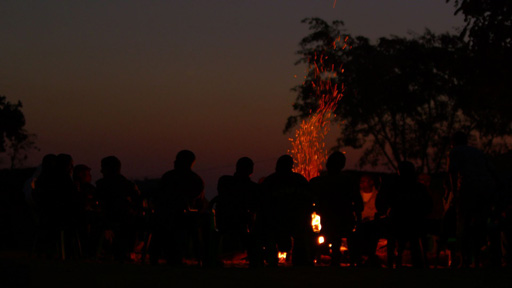
Here is a good low light test that shows the same footage throughout the entire ISO range.
Stabilization
Another great aspect of this camera is how well it handles motion and camera shake. Anyone who has shot for long with an HDSLR knows just how bad those cameras are with wobble and shake. They create an unnatural jitter or a jello effect due to the sensor. The C300 did not have this problem and handled motion extremely well. In the video below you can see a sequence I shot in a moving Land Cruiser on a very bumpy road. There is a normal amount of shake due to the bumpy car ride, but it’s natural and there is no jello effect that you would get with an HDSLR.
Battery Life
One thing I was really concerned about for this shoot was battery life. Being in rural Angola with no electricity and not knowing how much access I would have to a generator to charge batteries, I knew bringing enough battery power would be very important. I bought two of the normal size batteries, which each gave me about 180 minutes of footage, and two of the larger batteries, which gave me almost 300 minutes of shooting on a full charge. Between the four batteries I had around 11 hours of battery power, which was great, and I never even got close to using more than two batteries in a day.
Media
The camera has two compact flash card slots on the back of the camera. A neat feature is that they can be set up to either record continuous and will switch slots when one card is full without having to stop, or they can be setup to record simultaneously to each card slot, creating an instant backup of your footage. With the relatively inexpensive cost of CF cards these days this is a great option. If you can afford it, you can just buy a lot of cards and never reuse the secondary cards you recorded to as a back up. This is a great feature especially in a documentary setting when you may not have access to your hard drives to back up or the power to run your laptop.
Also gone is the super annoying 12- or 29-minute single clip limit found on HDSLRs. On the C300 you can record as long as you have card space so no more interrupting your interview subject to stop and start recording on your HDSLR.
The Footage
No matter how many bells and whistles a camera has, no matter how great the form factor is, the proof is still in the pudding: the footage.
Our workflow in the field was pretty simple. After each day of shooting, depending on our access to power, which we had each evening for a few hours through a generator, we would download the footage to a hard drive and then back up to an additional hard drive. We would then scrub through the footage just to make sure it was all there and that it looked ok.
I was immediately impressed with the quality of the files I was seeing in the field and I couldn’t wait to get them back and check them out on a good monitor.
The first thing I noticed about the files that really wowed me was the dynamic range. The detail I was getting in my shadows and in the highlights was like nothing I’ve ever seen before. Especially in high-contrast situations where the HDSLRs really struggle, the C300 gave loads more detail and allowed for a look that just isn’t achievable through my HDSLR.
To me this is really where the difference between HDSLRs and the C300 shines through and is something that could at least come close to justifying the exorbitant price of the C300. Yes the C300 has all of the features that a professional video camera should have and that sets it apart from the HDSLRs in a big way, but the quality of the footage was really what blew me away. And the exciting thing is the flexibility you have with the color profiles, creating a massive amount of options to give you the look you are going for.

One thing about the C300 footage that is harder to put into words is the “character” that the footage has. It just looks so rich in color and in detail. It feels natural and organic, almost film like. It just feels more sophisticated than HDSLR footage. Again in my opinion this is really what sets the C300 apart and was the most impressive and surprising thing I got out of my experience working with this camera.
Artifacts
The issue of moire is gone with this camera, but to be fair they fixed this for the most part in the 5D Mark III as well. I did however notice a weird circular banding in a few of my shots.
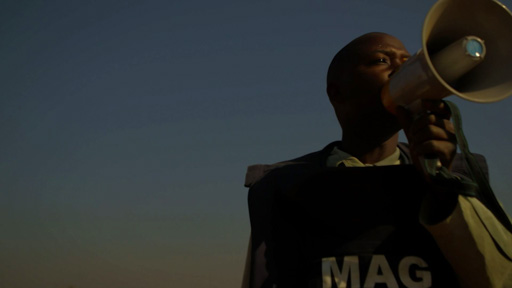
I also noticed that when you press record the first frame or two have some really weird pixelation going on and I noticed this with both C300s I was working with. It really didn’t affect the footage that much as it only happened really briefly and isn’t that noticeable, but just keep in mind that when you hit record the first few frames will be a bit funky.
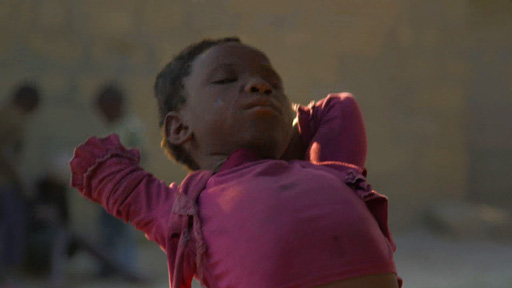
Summary
Despite the few things that bothered me about the C300, I found it to be a phenomenal verite-style documentary camera. In fact, for this type of work, given the form factor and features of the camera, in my opinion, there is not a better camera out there right now for guys like me.
Let me be clear that I do not think that the C300 is a replacement for the 5D Mark III or any HDSLR for that matter. This camera is in its own league entirely (especially when it comes to price). It doesn’t shoot stills: It is a professional video camera for the serious filmmaker.
Working with the C300 in a documentary setting was a really great experience. I was truly blown away with just how user friendly the camera was and how quickly I became comfortable with it. And of course the footage speaks for itself.
Like any camera it has its downfalls as you’ve seen above. I wish this were a 4K camera, I wish it shot in true RAW format and I wish it was not $16,000. But, those and the points mentioned above aside, it’s an incredible camera and a powerful tool.
If you have the cash and are willing to spring for it you will not be disappointed.
Other Reviews
There are plenty of excellent C300 reviews out there and I recommend you read as many as possible in order to get a balanced perspective on the camera. Here are some we found useful:
Mobius by Vincent Laforet
EOS C300 for Cinematographers by Jonathan Yi
Canon EOS C300 = Awesome by Jonathan Yi
Canon C300 review and short film “Le Mont, La Pluie et La Nuit” by Philip Bloom
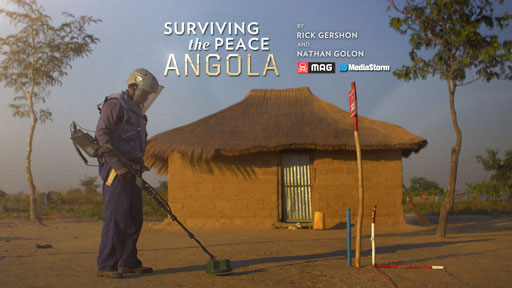 After 30 years of civil war, the Angolan people live with daily reminders of conflict. Twelve million mines and vast amounts of unexploded ordnance litter the ground, making every step a potentially life-threatening decision.
After 30 years of civil war, the Angolan people live with daily reminders of conflict. Twelve million mines and vast amounts of unexploded ordnance litter the ground, making every step a potentially life-threatening decision.

